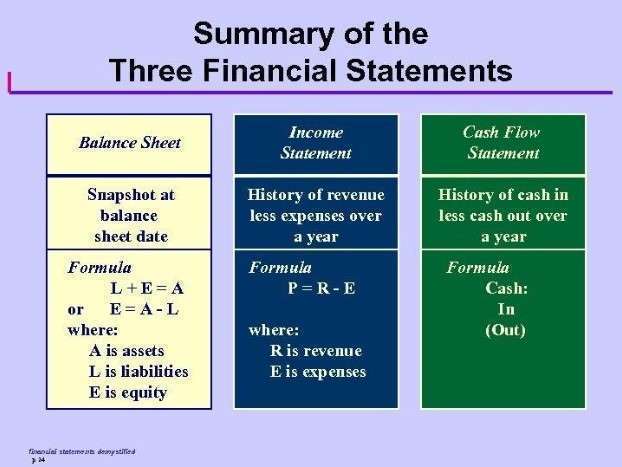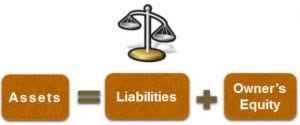
For example, if an individual invests $20,000 in the company but also brings in a $10,000 liability, their initial Capital is $10,000 (investment minus liability). We are a one-stop-shop for everything https://www.bookstime.com/ you need to know about starting, buying, running, and selling a small business. Our team of experts provides clear, knowledgeable, and neutral advice to help you make informed decisions.
Become a small business expert in just 5 minutes

Now that we clarified the terms, let’s look at the scenarios where you have an opening balance equity in your chart of accounts. It’s worth noting that some of them are a normal course of things, but others might require more of your attention. However, that doesn’t immediately mean you committed a mistake in using QuickBooks—it’s just how the system works.
AccountingTools
- Keep in mind that closing the balance equity to retained earnings or to owner’s equity is essentially the same concept.
- The opening balance account may not display on the balance sheet in case the balance is zero.
- The presence of Opening Balance Equity on the balance sheet is indicative of the need to allocate these initial values to the appropriate equity accounts.
- It is best to transfer opening balance equity accounts to retained earnings or owner’s equity accounts.
- Not closing out this account makes your balance sheet look unprofessional and can also indicate an incorrect journal entry in your books.
- Here on the blog, Jason shares insights from his experiences in both accounting and tech.
Your opening balance will be the closing balance of the last reporting period, ideally, zero, with all accounts balanced. Opening balance equity is an account created by accounting software to offset opening balance transactions. On the other hand, an excess of total liabilities over total assets would result in booking a goodwill balance in the opening opening balance equity meaning journal entry of the business. In the United States, the statement of changes in equity is also called the statement of retained earnings. It will be a temporary account showing the $100 balance to match the opening balance of the bank account. In both business structures, it is important to keep track of any owner’s investments or withdrawals.
- Make your balance sheet look more professional and clean by clearing the balance in this account and bringing it to zero.
- I also recommend getting in touch with an accounting professional for a personalized opinion.
- If the amount of the journal accounting entry does not support the amount on your bank statement and you close it out, the software will rearrange the opening balance equity account balance.
- So a good rule of thumb is closing out the opening balance equity account in QuickBooks and transferring the balance to the appropriate equity accounts, ensuring that your accounting records are accurate and up-to-date.
- Once you have a grasp of the basics of opening balance equity, you will be able to correct it and reduce it to zero.
- As a small business owner, it’s important to understand opening balance equity and how it affects your balance sheet.
- There may be many simple reasons for opening balance equity accounts to show up, even though there have been no recent new bank or customer entry additions.
What is a Balance Sheet for a Business?
Chartered accountant Michael Brown is the founder and CEO of Double Entry Bookkeeping. He has worked as an accountant and consultant for more than 25 years and has built financial models for all types of industries. He has been the CFO or controller of both small and medium sized companies and has run small businesses of his own. He has been a manager and an auditor with Deloitte, a big 4 accountancy firm, and holds a degree from Loughborough University. Suppose the founder starts a new business with an opening share capital of 100. Equity, in the simplest terms, is the money shareholders have invested in the business.
What is owner’s equity?
These equity accounts are just marked differently to represent the ownership or form of a business. Once all initial account balances have been entered, the balance in the opening balance equity account is moved to the normal equity accounts, such as common stock and retained earnings. From this point forward, it should no longer be possible to access the opening balance equity account, which means that access to the account should be locked down. Once the account entry process is completed for all accounts, compare the total opening balance equity to the sum of all beginning equity accounts listed in the prior account balances.
Opening Balance Equity in Accounting Frameworks

A common cause of a residual balance on your opening balance equity account is incorrect bank reconciliation adjustments, which result in an opening balance. When performing a bank reconciliation, make certain that the bank statement balances transaction accounts for uncleared bank checks and other factors. This account is needed when there are prior account balances that are initially being set up in Quickbooks. It is used to provide an offset to the other accounts so that the books are always balanced. When starting a new business, you do it from scratch, as you don’t yet have any previous financial history or transactions to work with. Still, you create accounts for your assets, liabilities, and equity and enter initial balances.
You Entered an Opening Balance in a New Account
It constitutes a part of the total capital invested in the business, which doesn’t belong to debt holders. If you’re not confident in your bookkeeping skills or need help with an audit, SMB Center can provide you with the support you need. We offer small business advice and support to help you stay on top of your finances and make informed decisions about your business. Two of the most common abbreviations that crop up when tackling the accounting process are “b/d” and “c/d. At this point, to zero this balance, you might want to distribute it to the correct accounts.

What are opening balance and closing balance?
Financial professionals often scrutinize the Opening Balance Equity account to ensure that the balances are being correctly resolved. This scrutiny is part of the process of establishing a solid foundation for the company’s financial records. As transactions are recorded over time, the balance in Opening Balance Equity should diminish, signifying that the company’s financial activities are being accurately reflected in its financial statements. The OBE account may cause confusion with financial statements, showing a temporary number that looks unprofessional. Errors in the OBE account can result in an imbalance between total assets and total liabilities plus equity, which can distort the company’s financial position and undermine the balance sheet’s integrity. Accurate recording of OBE is essential to ensure the balance sheet presents the company’s financial position accurately.

The image below shows where you can enter the opening balance for a new account, which you should never do. Our team of experts has years of experience in the small business industry, and we are dedicated to helping you succeed. We offer a wide range of resources, including articles, guides, and tools, to help you navigate the challenges of running a small business. All this frees you up to spend your time on what really matters, your business! Get in touch today for a no-obligation, free demo to find out what Mooncard can do for you. A very simple example can illustrate how the opening balance of a company is calculated.
- That’s why we offer expert advice and guidance on all aspects of small business finance.
- This account appears in your organization’s chart of accounts as an equity account, and is created automatically by the software.
- If the company has inventory, the opening balance equity account should be adjusted to reflect the correct inventory value.
- Without corresponding entries in other accounts to offset these balances, QuickBooks may create balancing entries in the OBE account.
- You should always investigate entries that QuickBooks has made to Opening Balance Equity to determine what the actual entry should have been.
- To do this, you should create an audit trail that documents all of your financial transactions.
